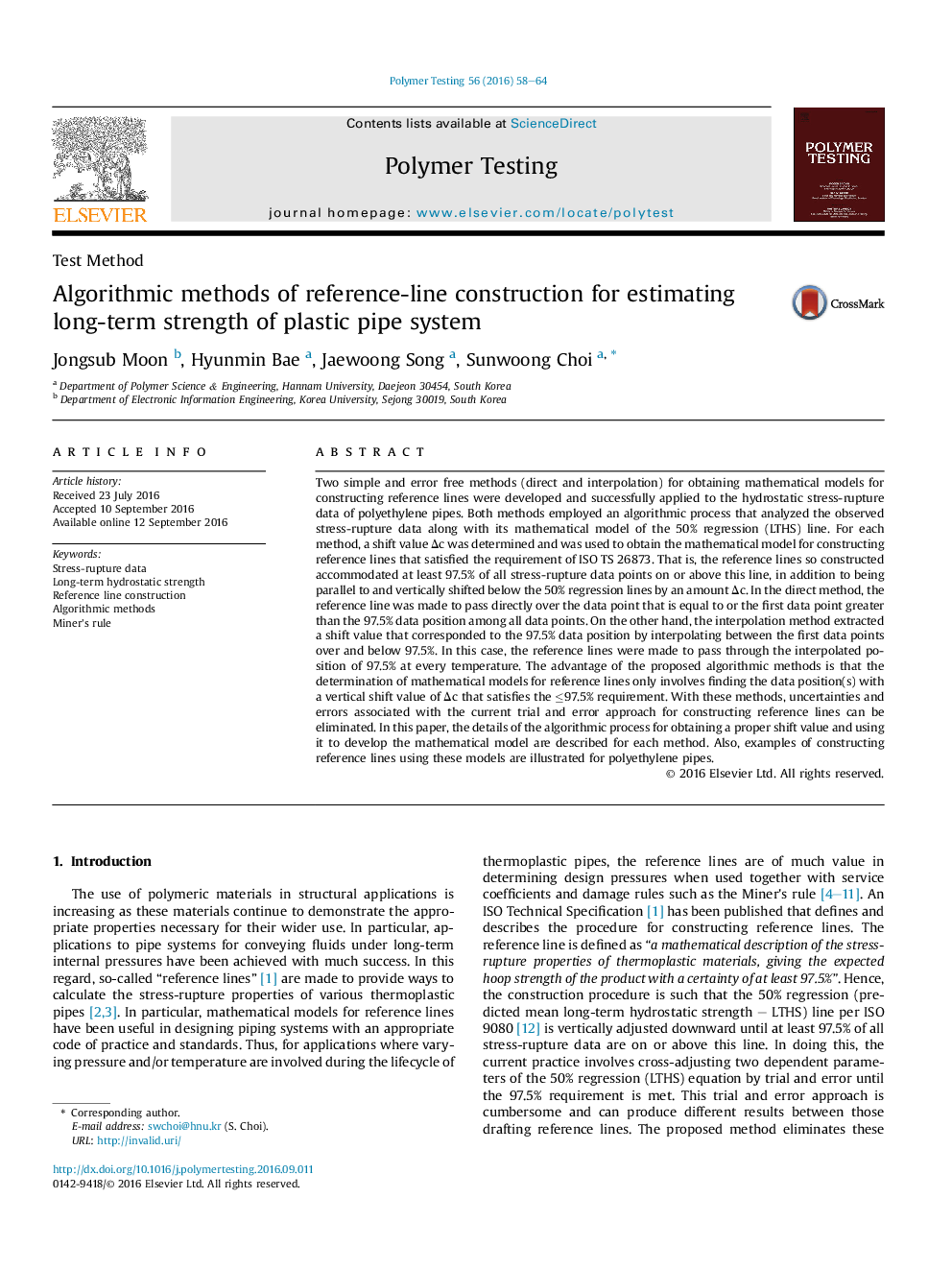| Article ID | Journal | Published Year | Pages | File Type |
|---|---|---|---|---|
| 5205579 | Polymer Testing | 2016 | 7 Pages |
Abstract
Two simple and error free methods (direct and interpolation) for obtaining mathematical models for constructing reference lines were developed and successfully applied to the hydrostatic stress-rupture data of polyethylene pipes. Both methods employed an algorithmic process that analyzed the observed stress-rupture data along with its mathematical model of the 50% regression (LTHS) line. For each method, a shift value Îc was determined and was used to obtain the mathematical model for constructing reference lines that satisfied the requirement of ISO TS 26873. That is, the reference lines so constructed accommodated at least 97.5% of all stress-rupture data points on or above this line, in addition to being parallel to and vertically shifted below the 50% regression lines by an amount Îc. In the direct method, the reference line was made to pass directly over the data point that is equal to or the first data point greater than the 97.5% data position among all data points. On the other hand, the interpolation method extracted a shift value that corresponded to the 97.5% data position by interpolating between the first data points over and below 97.5%. In this case, the reference lines were made to pass through the interpolated position of 97.5% at every temperature. The advantage of the proposed algorithmic methods is that the determination of mathematical models for reference lines only involves finding the data position(s) with a vertical shift value of Îc that satisfies the â¤97.5% requirement. With these methods, uncertainties and errors associated with the current trial and error approach for constructing reference lines can be eliminated. In this paper, the details of the algorithmic process for obtaining a proper shift value and using it to develop the mathematical model are described for each method. Also, examples of constructing reference lines using these models are illustrated for polyethylene pipes.
Keywords
Related Topics
Physical Sciences and Engineering
Chemistry
Organic Chemistry
Authors
Jongsub Moon, Hyunmin Bae, Jaewoong Song, Sunwoong Choi,
